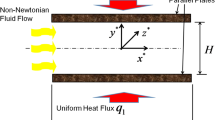Abstract
This paper presents a method and a system to identify the number of magnetic correction shunts and their positions for deflection yoke tuning to correct the misconvergence of colors of a cathode ray tube. The method proposed consists of two phases, namely, learning and optimization. In the learning phase, the radial basis function neural network is trained to learn a mapping: correction shunt position → changes in misconvergence. In the optimization phase, the trained neural network is used to predict changes in misconvergence depending on a correction shunt position. An optimization procedure based on the predictions returned by the neural net is then executed in order to find the minimal number of correction shunts needed and their positions. During the experimental investigations, 98% of the deflection yokes analyzed have been tuned successfully using the technique proposed.
Similar content being viewed by others
References
Barni, M., Cappellini, V. and Mecocci, A. (1997) Color-based detection of defects on chicken meat. Image and Vision Computing, 15, 549–556.
Bishop, C. M. (1996) Neural Networks for Pattern Recognition, Clarendon Press, Oxford.
Chung, B. M., Jung, C. O. and Park, C. H. (1995a) Neurofuzzy modelling and control for magnetic field of deflection yoke. Proceedings of the IEEE International Conference on Artificial Neural Networks, Vol. 1, Perth, Australia, pp. 210–214.
Chung, B. M., Jung, C. O. and Yun, J. S. (1995b) Quality control system for deflection yoke of CDT. Proceedings of the IEEE International Conference on Industrial Electronics, pp. 1543–1548.
Chung, B. M., Hong, C., Jung, C. O. and Park, C. H. (1995c) Intelligent adjustment for magnetic field of deflection yoke. Proceedings of the IEEE International Conference on Fuzzy Systems, Vol. 3, pp. 1555–1560.
Edwards, P. J., Murray, A. F. and Papadopoulos, G. (1999) The application of neural networks to the papermaking industry. IEEE Trans Neural Networks, 10(6), 1456–1464.
Gill, P. E., Murray, W. and Wright, M. H. (1981) Practical Optimization, Academic Press, London.
Haralick, R. M. and Shapiro, L. G. (1992) Computer and Robot Vision, Vol. 1, Addison-Wesley.
Haykin, S. (1999) Neural Networks, Prentice Hall.
Kirkpatrick, S., Gelatt, C. D. and Vecchi, M. P. (1983) Optimization by simulated annealing. Science, 220, 671–680.
Klir, G. S. and Yuan, B. (1995) Fuzzy Sets and Fuzzy Logic–Theory and Applications, Prentice-Hall, Englewood Cliffs.
Lin, T. Y. and Cercerone, N. (1997) Rough Sets and Data Mining, Kluwer Academic Publishers.
Moore, A. W., Schneider, J. G., Boyan, J. A. and Lee, M. S. (1998) Q2: Memory-based active learning for optimizing noisy continuous functions. Proceedings of the International Conference on Machine Learning, June/July, Madison.
Pawlak, Z. (1982) Rough sets. International Journal of Computer and Information Sciences, 11, 341–356.
Ripley, B. D. (1996) Pattern Recognition and Neural Networks, Cambridge University Press.
Song, W. K., Kim, J. H., Bang, W. C., Joo, S., Bien, Z. and Park, S. (1999) Convergence adjustment of deflection yoke using soft computing techniques. Proceedings of the IEEE International Conference on Fuzzy Systems, Vol. 1, Seoul, Korea, pp. 538–543.
Tsoukalas, L. H. and Uhrig, R. E. (1997) Fuzzy and Neural Approaches in Engineering, John Wiley & Sons.
Verikas, A., Malmqvist, K. and Bacauskiene, M. (2000a) Combining neural networks, fuzzy sets, and evidence theory based approaches for analysing color images. Proceedings of the IEEE-INNS-ENNS International Joint Conference on Neural Networks, Vol. II, Como, Italy, pp. 297–302.
Verikas, A., Malmqvist, K., Bacauskiene, M. and Bergman, L. (2000b) Monitoring the de-inking process through neural network based color image analysis. Neural Computing and Applications, 9(2), 142–151.
Verikas, A. and Gelzinis, A. (2000) Training neural networks by stochastic optimisation. Neurocomputing, 30, 153–172.
Whitaker, C. (1994) Electronic Displays: Technology, Design, and Applications, McGraw-Hill, New York.
Author information
Authors and Affiliations
Rights and permissions
About this article
Cite this article
Verikas, A., Bacauskiene, M., Dosinas, A. et al. Intelligent deflection yoke magnetic field tuning. Journal of Intelligent Manufacturing 15, 275–286 (2004). https://doi.org/10.1023/B:JIMS.0000026566.63878.72
Issue Date:
DOI: https://doi.org/10.1023/B:JIMS.0000026566.63878.72




